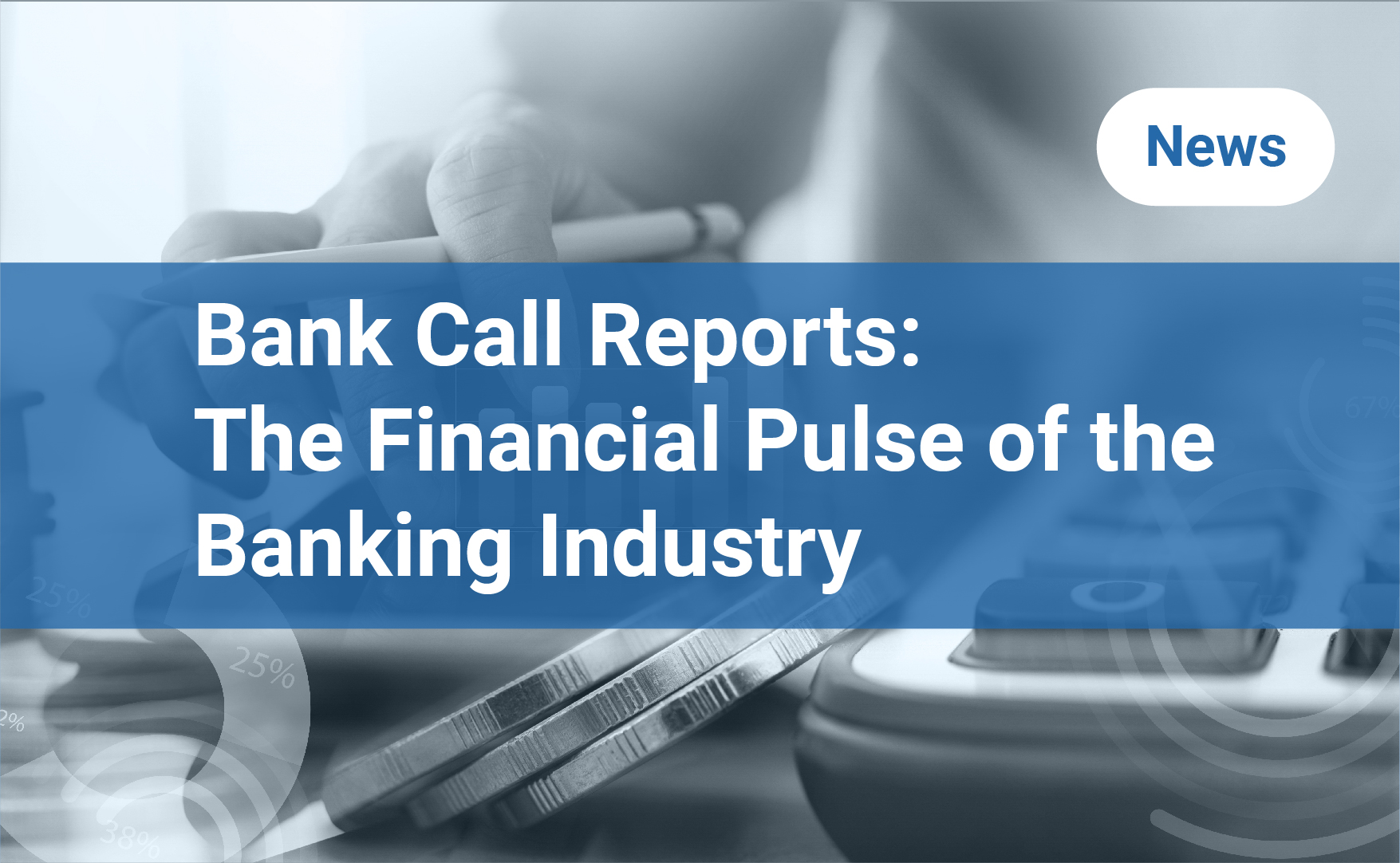Estimated reading time: 6 minutes
Table of contents
Bank Call Reports are an essential component of the U.S. banking industry’s regulatory framework. These reports provide detailed financial information about a bank’s operations, and they are required to be filed on a quarterly basis with regulatory agencies such as the Federal Reserve, FDIC, and OCC. In this article, we will explore what Bank Call Reports are, why they are important, and how they are used in the banking industry. By understanding the significance of Bank Call Reports, investors, regulators, and other stakeholders can gain valuable insights into a bank’s financial performance and overall health.
Overview of Bank Call Reports
Bank Call Reports serve a critical role in the U.S. banking industry by providing detailed financial information about a bank’s operations. The primary purpose of these reports is to enable regulators to monitor the safety and soundness of the banking system and to identify potential risks to financial stability.
The legal requirements mandate that all federally insured banks must file these reports on a quarterly basis with their respective regulatory agencies. The reports are filed electronically and must be submitted within 30 days of the end of each calendar quarter.
The information collected in Reports includes data on a bank’s income, expenses, assets, and liabilities. This data is used by regulators to assess a bank’s financial health and to monitor its compliance with regulatory requirements. By providing timely and accurate financial information, these Reports help regulators identify emerging risks and take appropriate action to protect the stability of the banking system.
Financial Information Provided by Bank Call Reports
Bank Call Reports contain a wealth of financial information that provides valuable insights into a bank’s operations. The data collected in these reports include information on a bank’s income, expenses, assets, and liabilities.
Income and expense data collected in these Reports include information on a bank’s interest income, non-interest income, and operating expenses. This data is used to calculate a bank’s net income and to evaluate its profitability.
Asset and liability data collected in these Reports include information on a bank’s loans, deposits, and other assets and liabilities. This data is used to assess a bank’s liquidity, solvency, and overall financial health.
The uses of these Reports extend beyond regulators to investors and other stakeholders. Investors use the information in these reports to evaluate a bank’s financial performance and make informed investment decisions. By providing timely and accurate financial data, Bank Call Reports enhance transparency in the banking industry and promote greater accountability among banks.
In summary, the financial information provided by Bank Call Reports is critical for regulators, investors, and other stakeholders to assess a bank’s financial health, profitability, and overall performance.

Historical Background of Bank Call Reports
Bank Call Reports have a long history in the United States. These reports were first introduced in the early 20th century as a way for regulators to monitor the financial health of banks and identify potential risks to the banking system.
Over the years, the format and content of these Reports have evolved to reflect changes in the banking industry and advancements in technology. Today, Bank Call Reports are filed electronically and contain more detailed financial information than ever before.
The origin of the term “Call Report” is not entirely clear. Some sources suggest that the term “call” refers to the requirement that banks must call their regulators to report their financial data. Others suggest that the term may have originated from the practice of regulators calling banks to request financial data.
Regardless of its origins, the term “Call Report” has become synonymous with the detailed financial data that banks are required to provide to regulatory agencies on a quarterly basis. This data plays a critical role in monitoring the safety and soundness of the U.S. banking system and promoting greater transparency and accountability in the banking industry.
Responsibility for Filing Bank Call Reports
The responsibility for filing Bank Call Reports falls on the banks themselves. All federally insured banks in the United States are required to file these reports on a quarterly basis with their respective regulatory agencies, which include the Federal Reserve, FDIC, and OCC.
The signatories for Bank Call Reports vary depending on the structure of the bank. In the case of publicly traded banks, the chief executive officer and chief financial officer typically sign the reports. In the case of privately held banks, the owners or directors of the bank may be required to sign the reports.
Accurate reporting in these Reports is of utmost importance. The information contained in these reports is used by regulators to monitor the safety and soundness of the banking system and to identify potential risks to financial stability. Inaccurate or incomplete information can lead to incorrect assessments of a bank’s financial health and could potentially have significant consequences for the bank and the broader financial system.
In addition to the regulatory requirements, accurate reporting is also important for investors and other stakeholders who rely on these reports to make informed decisions. By providing timely and accurate financial data, banks can enhance transparency in the banking industry and promote greater accountability.
Conclusion
In conclusion, Bank Call Reports play a crucial role in the U.S. banking industry by providing detailed financial information about a bank’s operations. These reports are required to be filed on a quarterly basis with regulatory agencies such as the Federal Reserve, FDIC, and OCC.
To recap, Bank Call Reports provide information on a bank’s income, expenses, assets, and liabilities. They are used by regulators to assess a bank’s financial health and to monitor its compliance with regulatory requirements. Investors and other stakeholders also use this information to evaluate a bank’s financial performance and make informed investment decisions.
The importance of these Reports for the banking sector cannot be ignored. By providing timely and accurate financial data, these reports increase transparency and accountability in the banking industry and support the stability of the US banking system.
Looking ahead, future trends and developments in Bank Call Reporting may include advances in technology that make it easier for banks to file these reports and for regulators to analyze the data. There may also be increased emphasis on environmental, social, and governance (ESG) reporting in Bank Call Reports, reflecting a growing interest in sustainable and responsible banking practices.
Overall, Bank Call Reports are a vital component of the U.S. banking industry’s regulatory framework. By providing detailed financial information about a bank’s operations, these reports play a critical role in maintaining the safety and soundness of the banking system and promoting greater transparency and accountability in the industry.
Looking ahead, future trends and developments in Bank Call Reporting may include advances in technology that make it easier for banks to file these reports and for regulators to analyze the data. There may also be increased emphasis on environmental, social, and governance (ESG) reporting in Bank Call Reports, reflecting a growing interest in sustainable and responsible banking practices.




